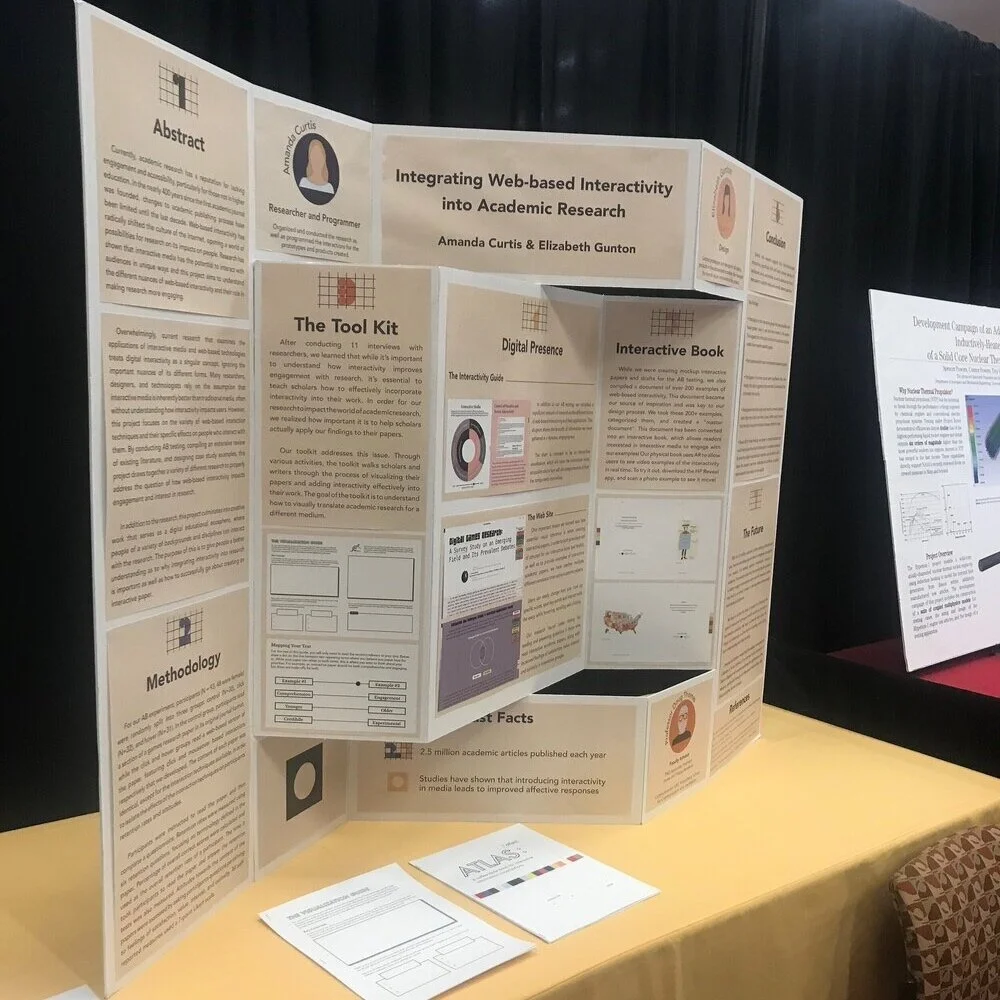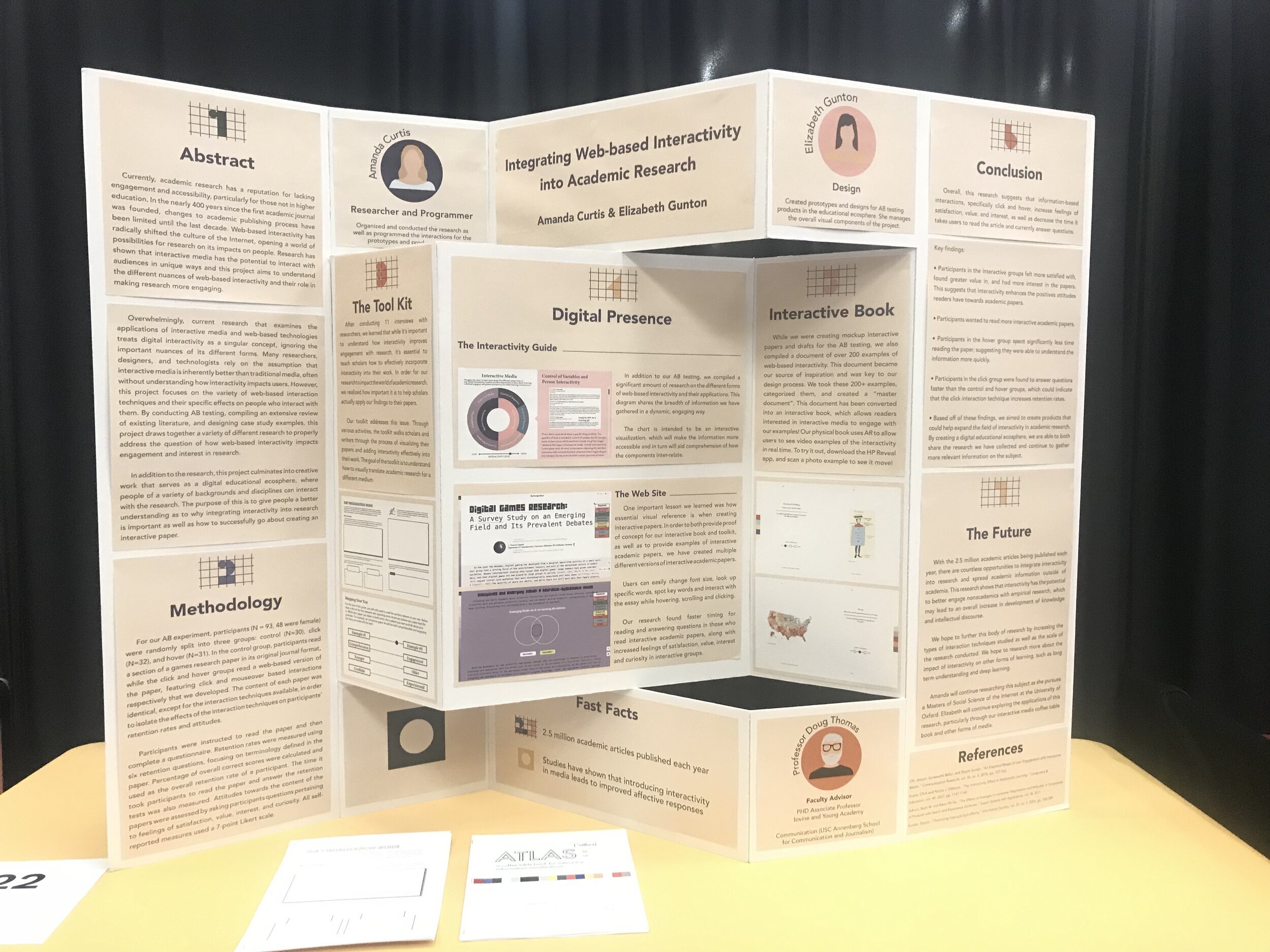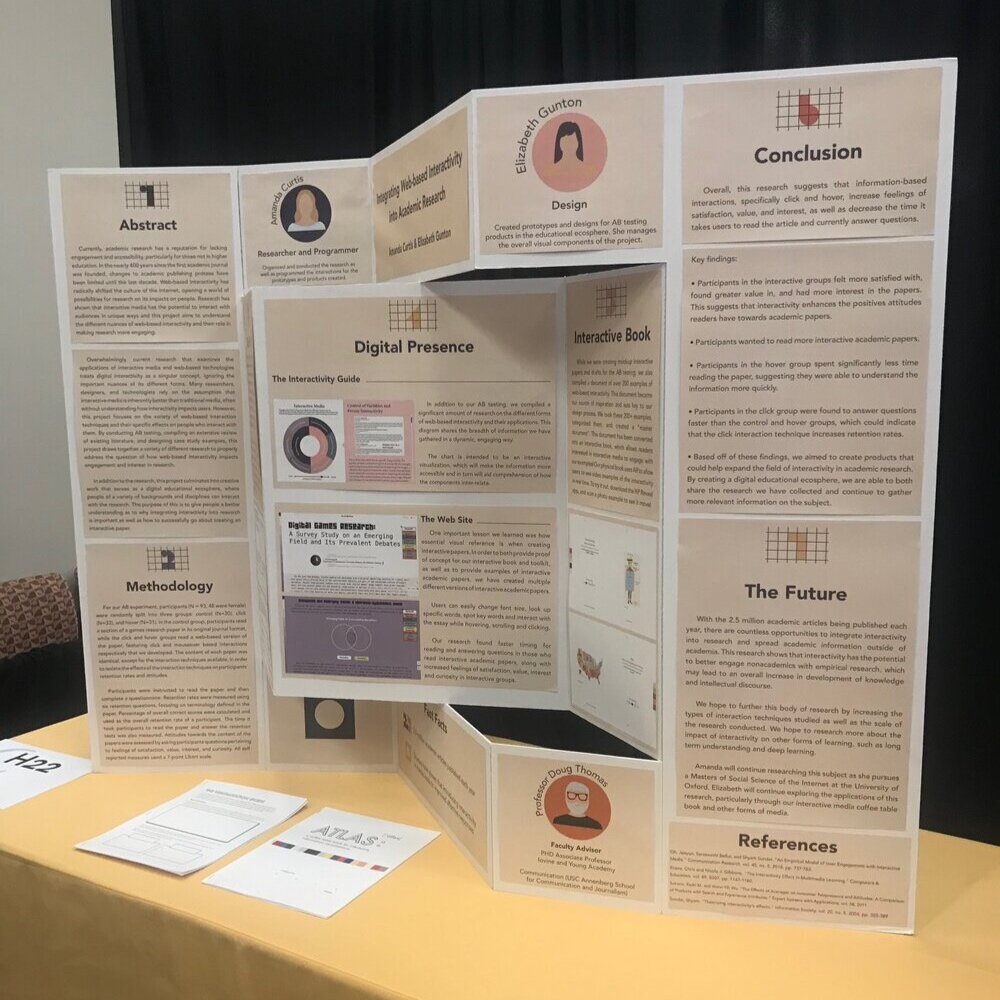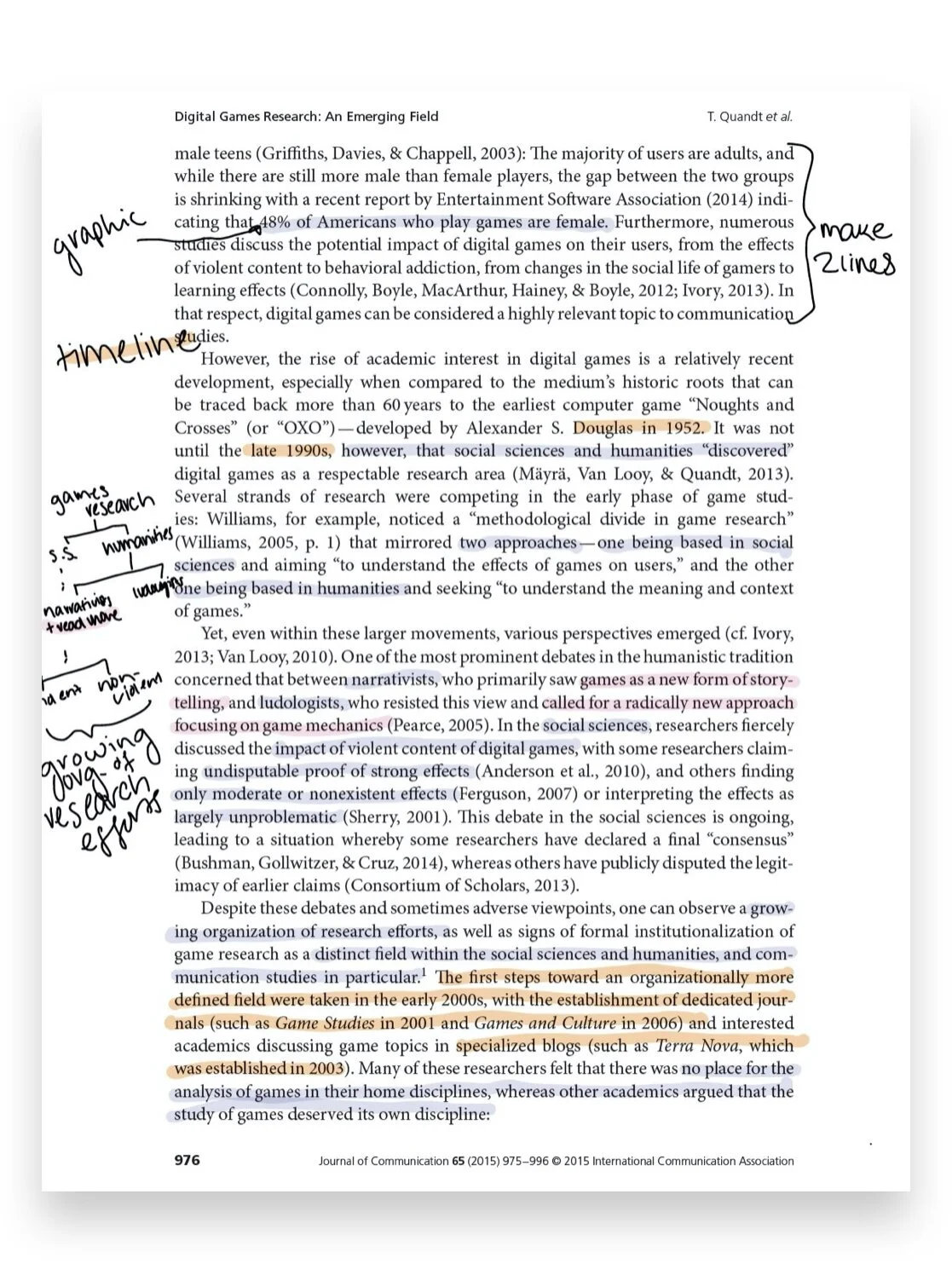the Atlas Project
🌟 Making academic research interactive. 🌟Overview
The Atlas Project is a multimodal project centered around the mission of enhancing engagement with academic research. Research has shown that academic papers are difficult to digest, resulting in lower retention rates. By leveraging the affordances of interactive media, The Atlas Project is working towards increasing accessibility to research and the overall dissemination of scholarly information.
So, what exactly does this look like? At the moment, The Atlas Project is focusing on exploring the different ways information can be visually expressed, with a focus on web-based interactivity. Our goal is to create a new visual vocabulary for scholars to incorporate into their work and a methodology for seamlessly creating interactive papers that anyone can interact with and learn from. But in the end, Atlas is all about changing the way we interact with information.
Currently, The Atlas Project has released a toolkit to walk scholars through visualizing their research and an AR art book which focuses on user engagement with different types of interactivity currently in use. Right now I am working on developing an online ecosystem to share our research in a dynamic, engaging way. Read more about my inspiration for The Atlas Project here.
My role: project director, researcher, and programmer.Team: Elizabeth Gunton. Focus: interactive media, user research, digital design.Toolkit
While researching ways to create interactive papers, we realized that the first necessary product of The Atlas Project is a means of helping scholars think about their papers visually. It’s one thing to ask an artist to visually depict their work, but a whole other playing field to ask an academic to do the same. That’s why we’ve created the Atlas toolkit, a step-by-step guide for learning how to think visually. You can download the toolkit here.
Educational Art Book
Throughout our research process, we compiled 200+ examples of ways to present information using web-based interactivity. This document became a constant source of inspiration, leading us to develop an interactive art book. In this book, our hundreds of examples are categorized. Readers are able to immerse themselves in the examples through AR video examples. This physical book serves as motivation to spark creativity.
Reception
In Spring 2019, The Atlas Project was submitted to the USC Undergraduate Symposium for Scholarly and Creative Work. This symposium is a university wide conference where undergraduates submit their work in discipline-centric categories. A panel of judges, composed of USC faculty members and doctoral students, review written materials, a poster (pictured below), and a presentation. The Atlas Project was awarded the Interdisciplinary Award in the Humanities category.
My work on The Atlas Project was also recognized by the USC Discovery Scholar distinction. This distinction is awarded to graduating seniors who have meaningfully contributed to their field through new scholarship.
Additionally, The Atlas Project collaborated with Matthew Manos to produce a visually unique paper, which was published in the ADIM 2019 Conference proceedings.
Future
Our initial research has yielded promising results, suggesting that interactive papers not only increase retention rates of information and overall levels of engagement, but they also yield a higher likability index (meaning readers were more likely to enjoy reading interactive papers, and even wanted to read more). Read our first research paper on the role of Atlas here.
We are currently conducting more extensive research to prove the benefits of The Atlas Project as well as partnering with academics across the globe to help them visually and interactively express their research.
If you’re interested in working with Atlas on a project, send me a message! 












